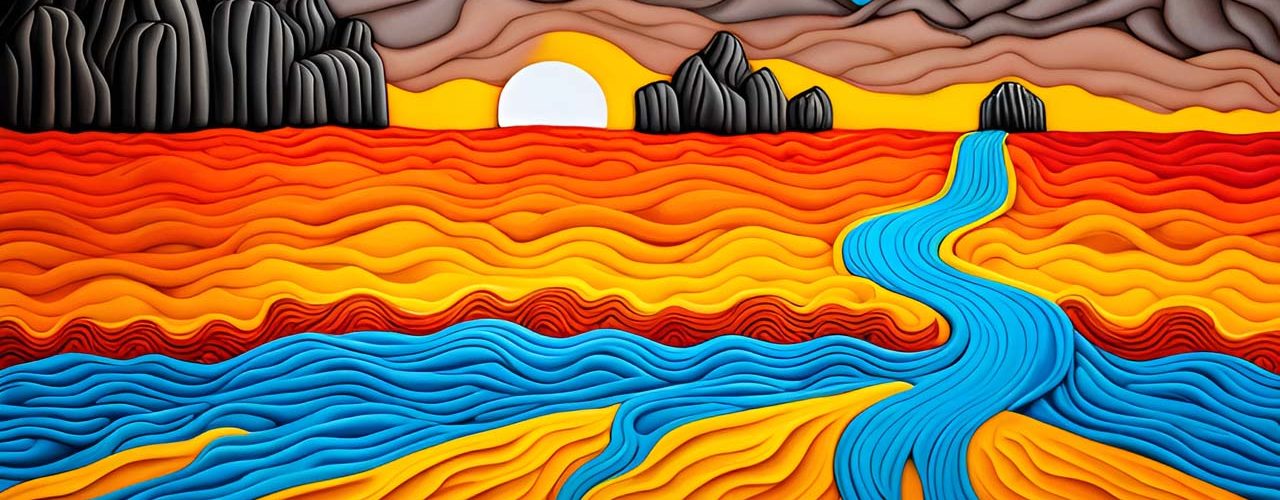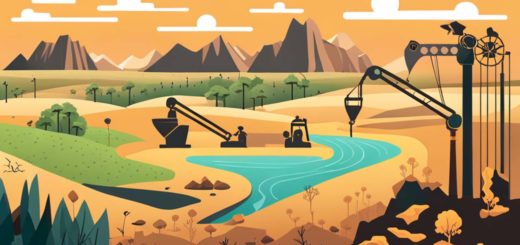Rising Temperatures and Extreme Weather: How Climate Change is Impacting Australia’s Environment and Economy

Climate change is a global issue that’s affecting countries around the world, and Australia is no exception. The land down under is experiencing significant changes to its environment and economy due to rising temperatures and extreme weather events. In this article, we’ll take a closer look at the current state of climate change in Australia and explore how it’s impacting our environment, economy, and daily lives.
Rising Temperatures in Australia
As mentioned earlier, one of the most noticeable effects of climate change in Australia is the increase in average temperatures. This rise in temperature has been attributed to the increase in greenhouse gas emissions from human activities, such as the burning of fossil fuels and deforestation. The environmental impact of the Australian mining industry, for example, has contributed to this issue.
Rising temperatures in Australia are having a significant impact on the environment and economy. Droughts, heatwaves, and bushfires are becoming more frequent and severe, causing damage to ecosystems, agriculture, and infrastructure. Moreover, higher temperatures can lead to more intense evaporation, which can exacerbate water scarcity in certain regions. In turn, these changes can affect industries such as agriculture and tourism, which depend heavily on favourable weather conditions and the availability of water resources.
Extreme Weather Events in Australia
Another major consequence of climate change is the increased frequency and severity of extreme weather events in Australia. Bushfires, floods, and droughts have always been a part of the Australian landscape, but their intensity and duration have been exacerbated by climate change. In recent years, we’ve witnessed devastating bushfires, such as the 2019-2020 Black Summer bushfires, which resulted in loss of lives, homes, and wildlife.
These extreme weather events have a significant impact on both the environment and economy. As seen in this article by the Australian Museum, the damage caused by these events can cost billions of dollars in repairs and recovery efforts, putting a strain on government resources and the national economy. Additionally, they can lead to the loss of critical habitats for Australia’s unique wildlife, further endangering already vulnerable species.
Impact on Australia’s Environment
Climate change is having a profound impact on Australia’s environment, affecting our wildlife and ecosystems in various ways. Rising temperatures and extreme weather events are altering the distribution of species and their habitats, which can lead to the extinction of certain species or the proliferation of invasive species. Coral bleaching events, such as the ones experienced by the Great Barrier Reef, are becoming more frequent due to increased ocean temperatures and acidification, threatening the health of these vital ecosystems.
Moreover, climate change is exacerbating the frequency and severity of bushfires, which can lead to the loss of critical habitats for Australia’s unique wildlife. The 2019-2020 bushfires, for example, resulted in the death or displacement of an estimated 3 billion animals, including kangaroos, koalas, and various bird species.
Impact on Australia’s Economy
As mentioned earlier, climate change is not only an environmental issue but also an economic one. The increased frequency and severity of extreme weather events can have a significant impact on industries such as agriculture and tourism. Droughts, floods, and bushfires can damage crops, reduce water availability, and lead to the loss of infrastructure, ultimately affecting the livelihoods of many Australians.
Furthermore, climate change can also affect the tourism industry, as Australia’s iconic natural attractions, such as the Great Barrier Reef and our unique wildlife, face increasing threats from rising temperatures and extreme weather events. A decline in tourism can result in job losses and reduced revenue for businesses that depend on the industry.
Government Response to Climate Change in Australia
Given the significant impact of climate change on Australia’s environment and economy, it’s crucial for the government to take action to address this issue. Over the years, various policies and initiatives have been introduced, such as Australia’s plan for reducing greenhouse gas emissions. However, some critics argue that the government’s efforts have been insufficient.
Despite these criticisms, the Australian government has taken some steps to address climate change. For instance, they’ve committed to a target of reducing greenhouse gas emissions by 26-28% below 2005 levels by 2030. Additionally, the government has invested in renewable energy projects and encouraged the adoption of cleaner technologies. The effectiveness of these measures, however, remains a topic of debate.
What Can Australians Do to Help?
While the government plays a significant role in addressing climate change, individual actions can also make a difference. There are many ways Australians can help mitigate the effects of climate change and contribute to a more sustainable future. Some ways to embrace sustainable living in Australia include:
- Reducing energy consumption by using energy-efficient appliances, turning off lights when not in use, and insulating homes to save on heating and cooling costs.
- Using public transportation, carpooling, cycling, or walking instead of driving whenever possible.
- Supporting renewable energy by installing solar panels or choosing an electricity provider that uses renewable sources.
- Reducing water waste by fixing leaks, using water-efficient appliances, and collecting rainwater for gardening purposes.
- Composting food waste and using reusable bags, bottles, and containers to reduce plastic waste.
- Supporting businesses and products that prioritize sustainability and have a lower environmental impact.
By adopting these practices, Australians can help reduce their carbon footprint and contribute to a more sustainable future for our country.
Conclusion
In conclusion, climate change is already having a significant impact on Australia’s environment and economy. Rising temperatures and extreme weather events are affecting our ecosystems, wildlife, and industries, such as agriculture and tourism. While the government has introduced some measures to address climate change, more needs to be done to ensure a sustainable future for Australia.
As individuals, we can also play a part in mitigating the effects of climate change by adopting more sustainable practices in our daily lives. By working together, we can help protect Australia’s unique environment and ensure a thriving economy for generations to come. It’s essential that we remain mindful of the impact of climate change on our country and take action to address this pressing issue.
So, whether you’re an everyday Aussie looking to make a difference or a policymaker searching for solutions, it’s time to take climate change seriously. Let’s join forces and work towards a greener, more sustainable Australia for ourselves and future generations. Remember, every small action counts, and together we can create a more resilient nation in the face of climate change.
Additional Resources
If you’d like to learn more about climate change in Australia and what you can do to help, consider exploring the following resources:
- Climate Council: An independent, non-profit organisation that provides authoritative information on climate change, its impacts, and solutions.
- Australian Government Department of Climate Change, Energy, the Environment and Water: Offers information on Australia’s climate change policies, programs, and initiatives.
- ClimateWorks Australia: An organisation that works with governments, businesses, and communities to drive Australia’s transition to a low-carbon economy.
- Clean Energy Council: The peak body for the clean energy industry in Australia, providing advocacy and support for the development of renewable energy and energy storage.
- Sustainability Victoria: A government agency that offers practical advice and support to help Victorians reduce their environmental impact.
By staying informed and taking action, we can help ensure a brighter future for Australia in the face of climate change. Let’s work together to protect our environment, economy, and way of life for years to come.



